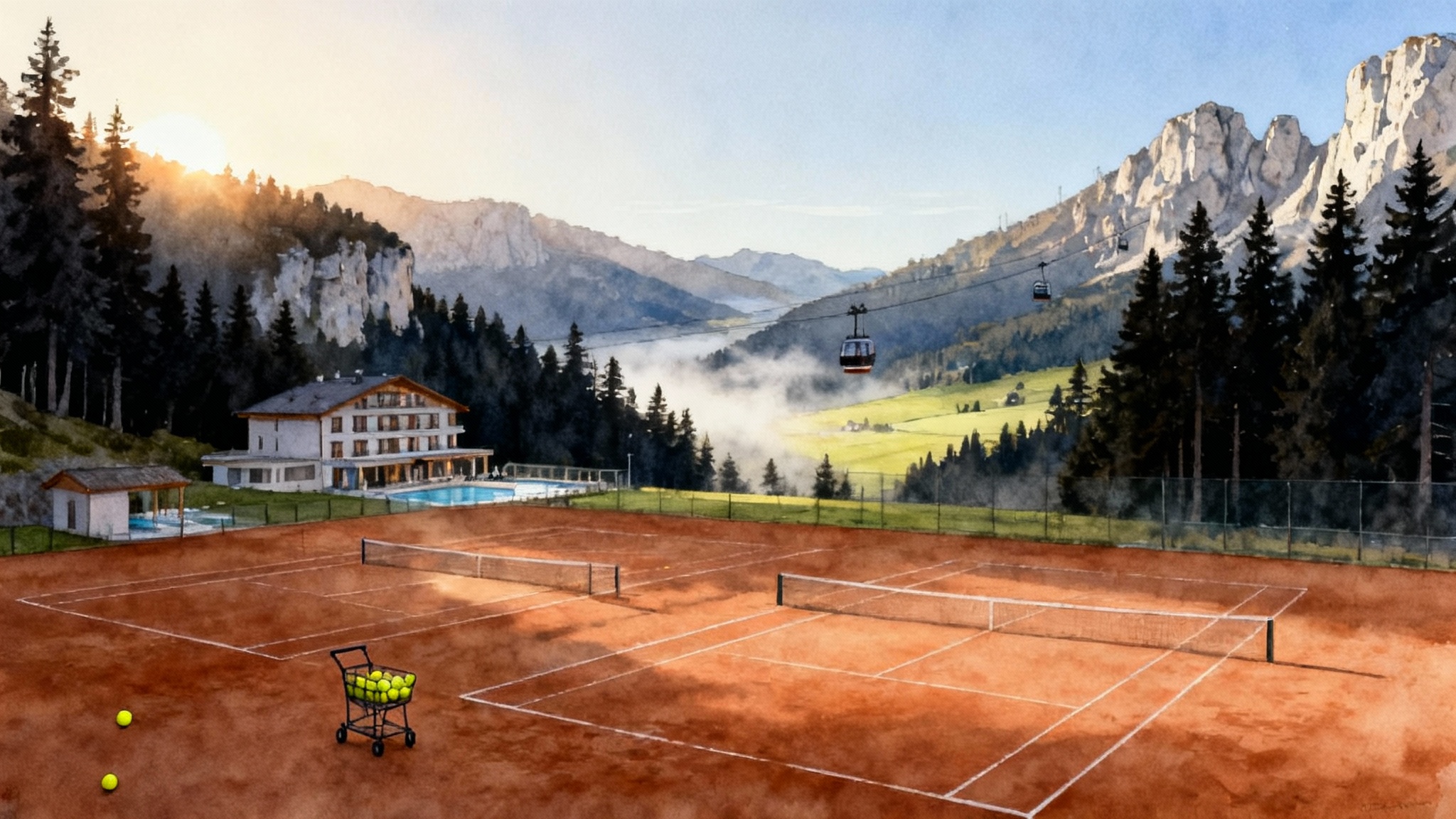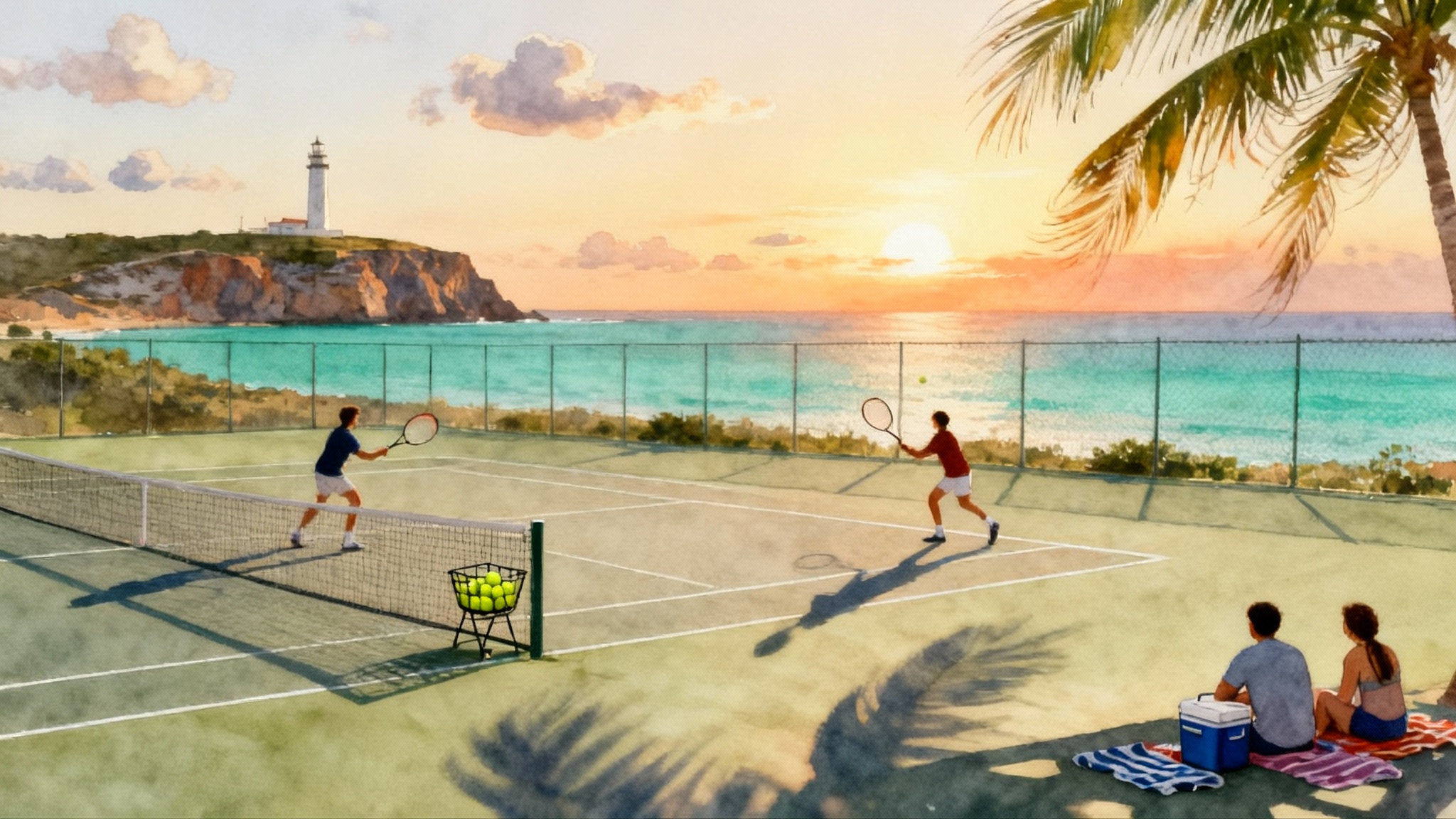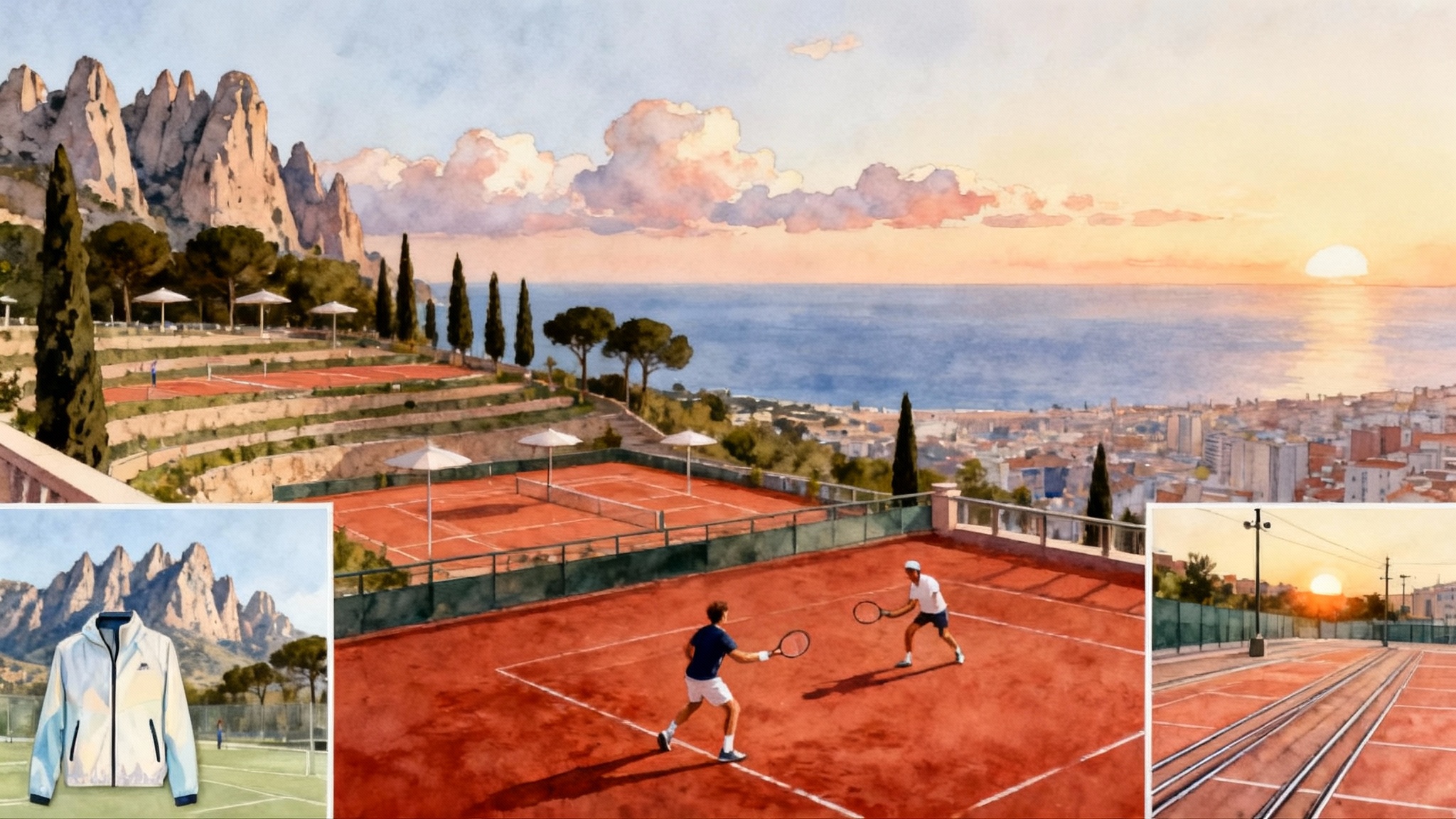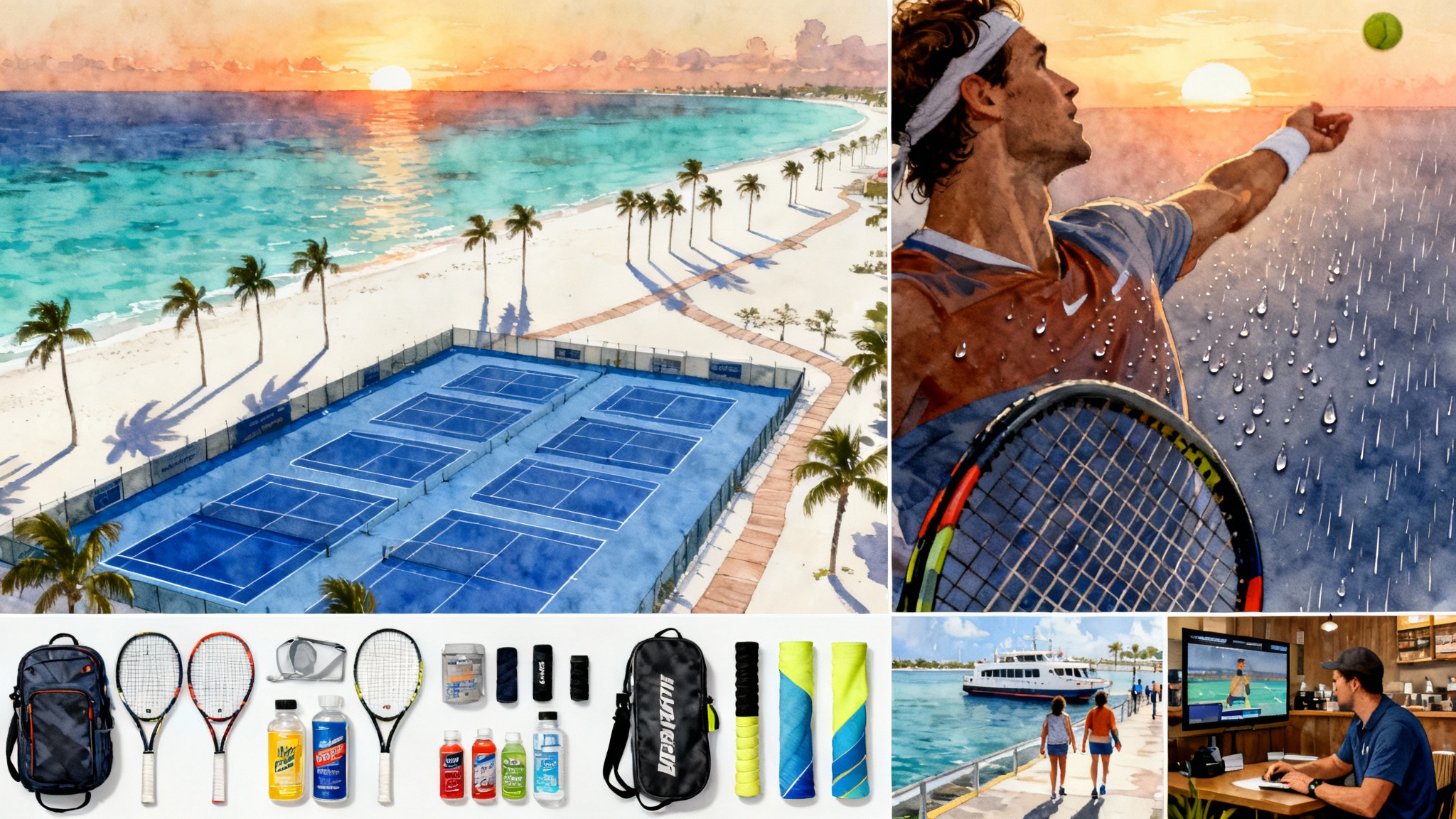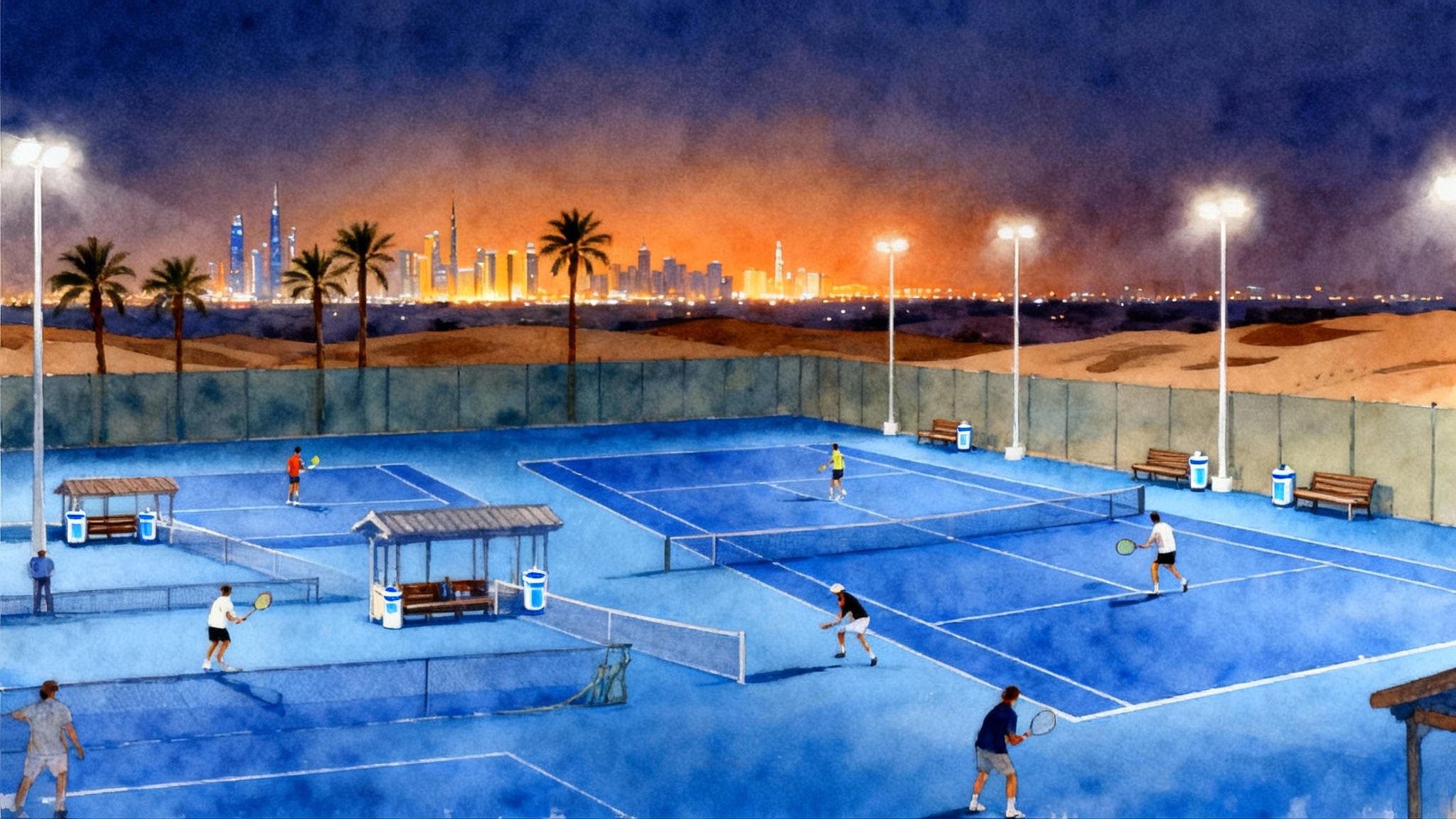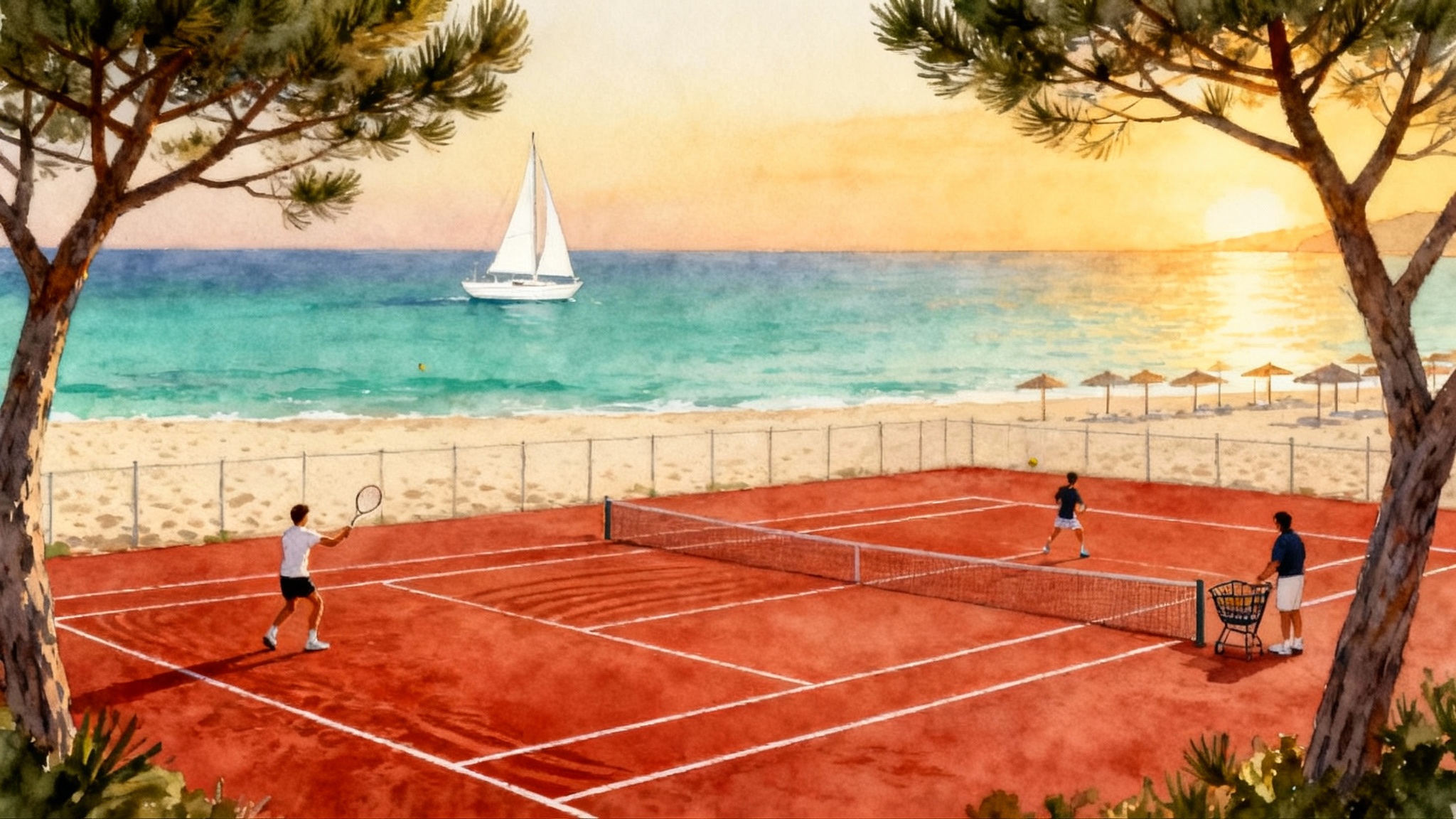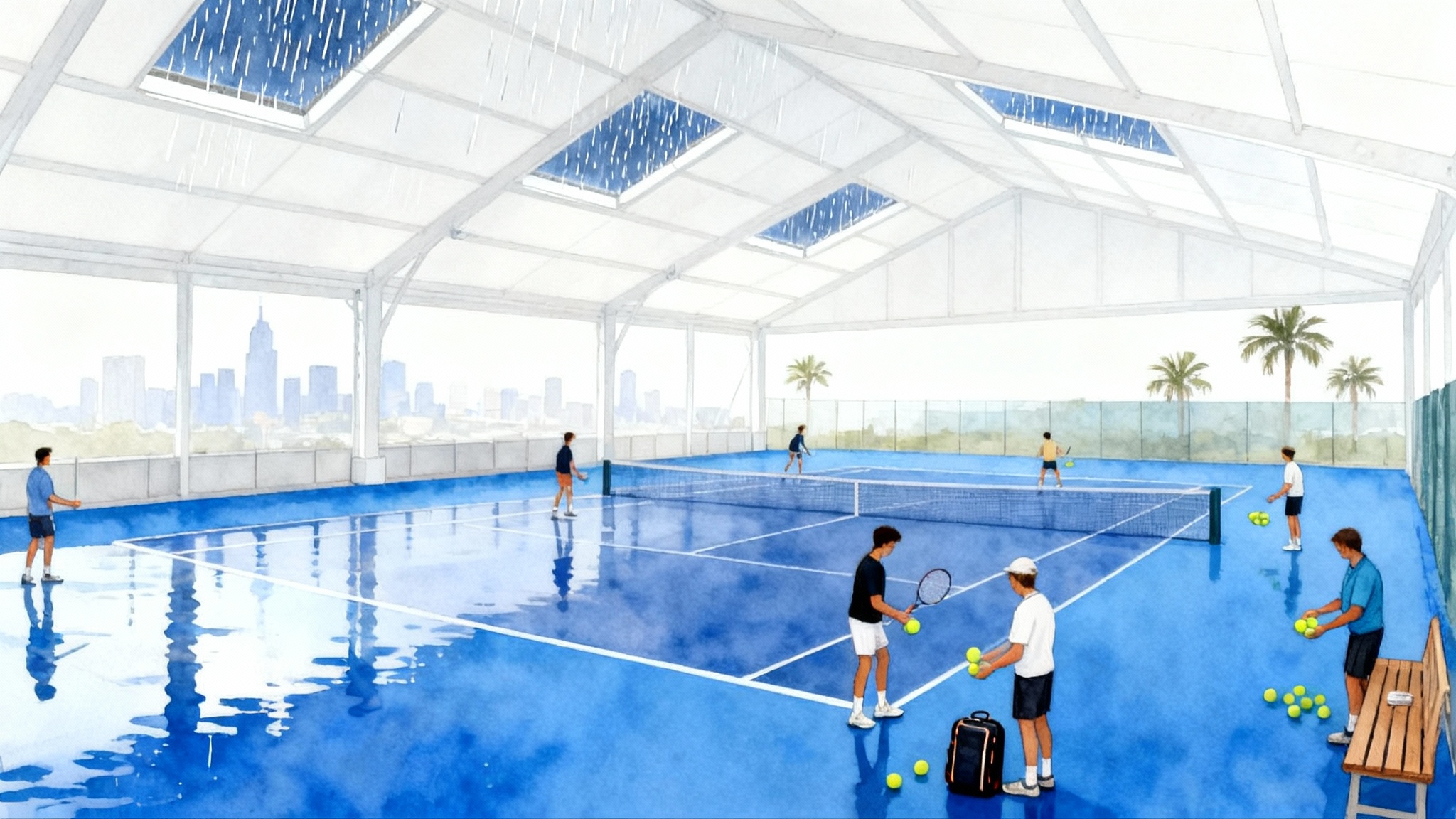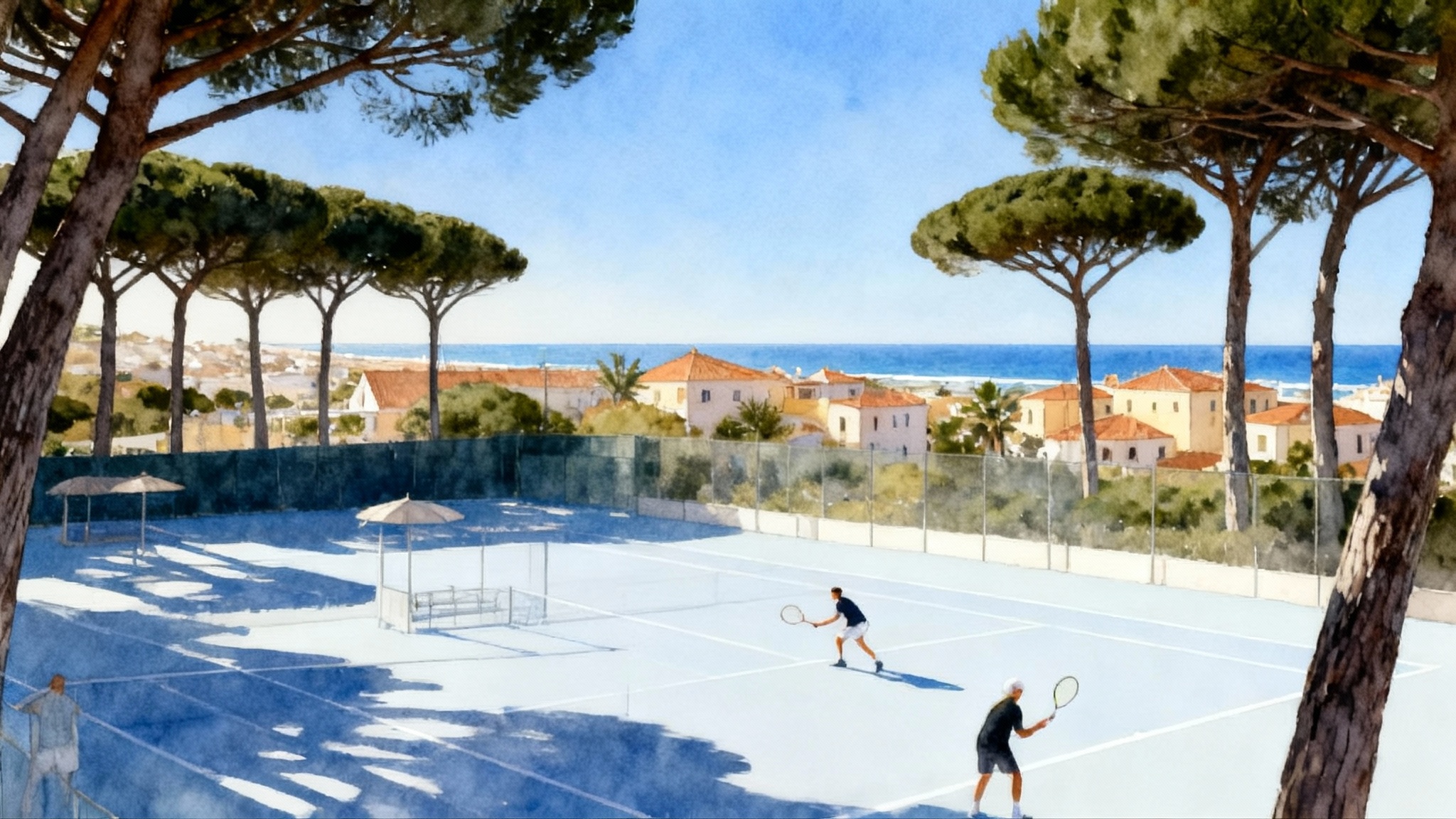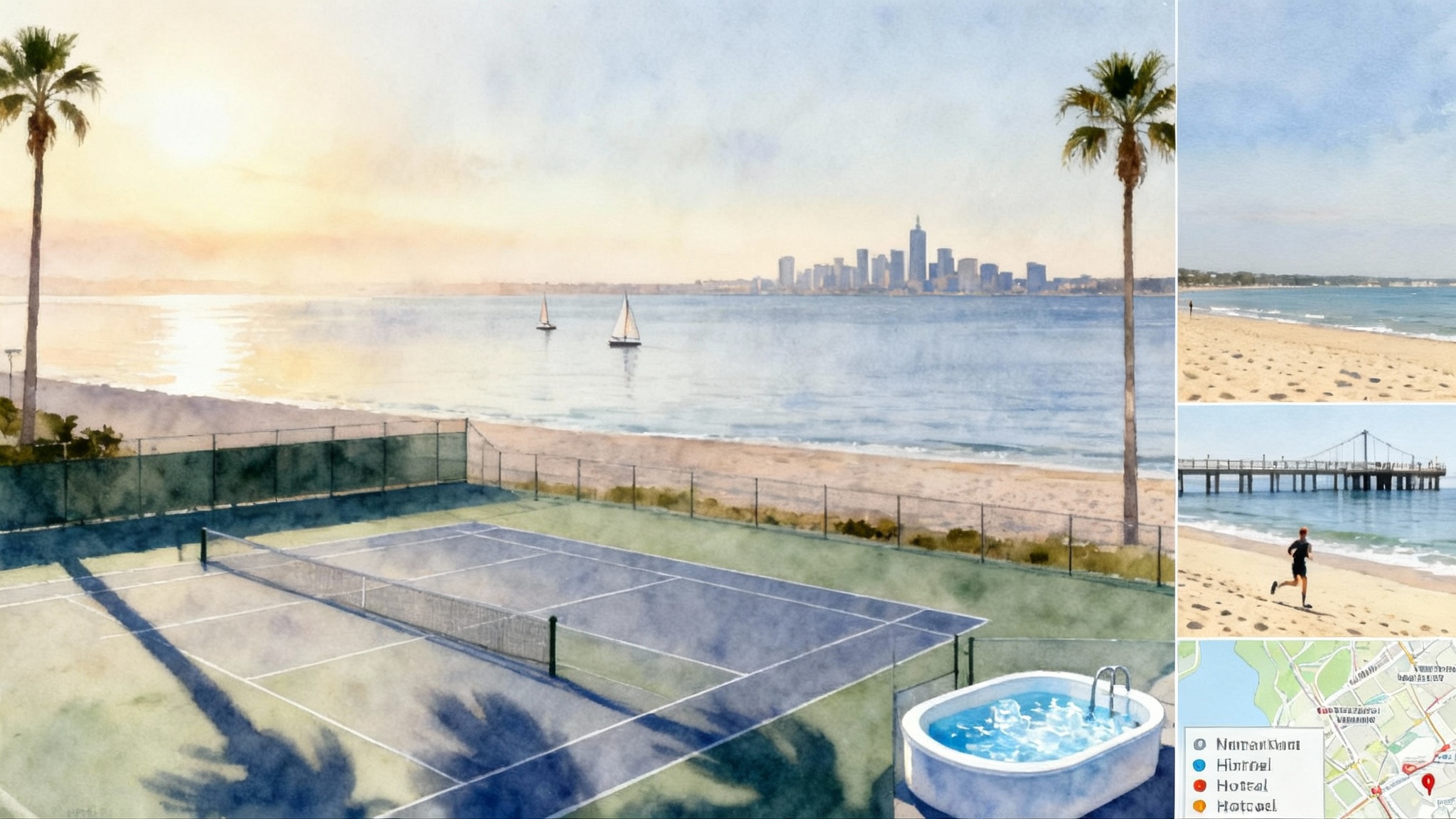Rome Shoulder-Season Tennis Guide 2025–26: Indoor and Clay
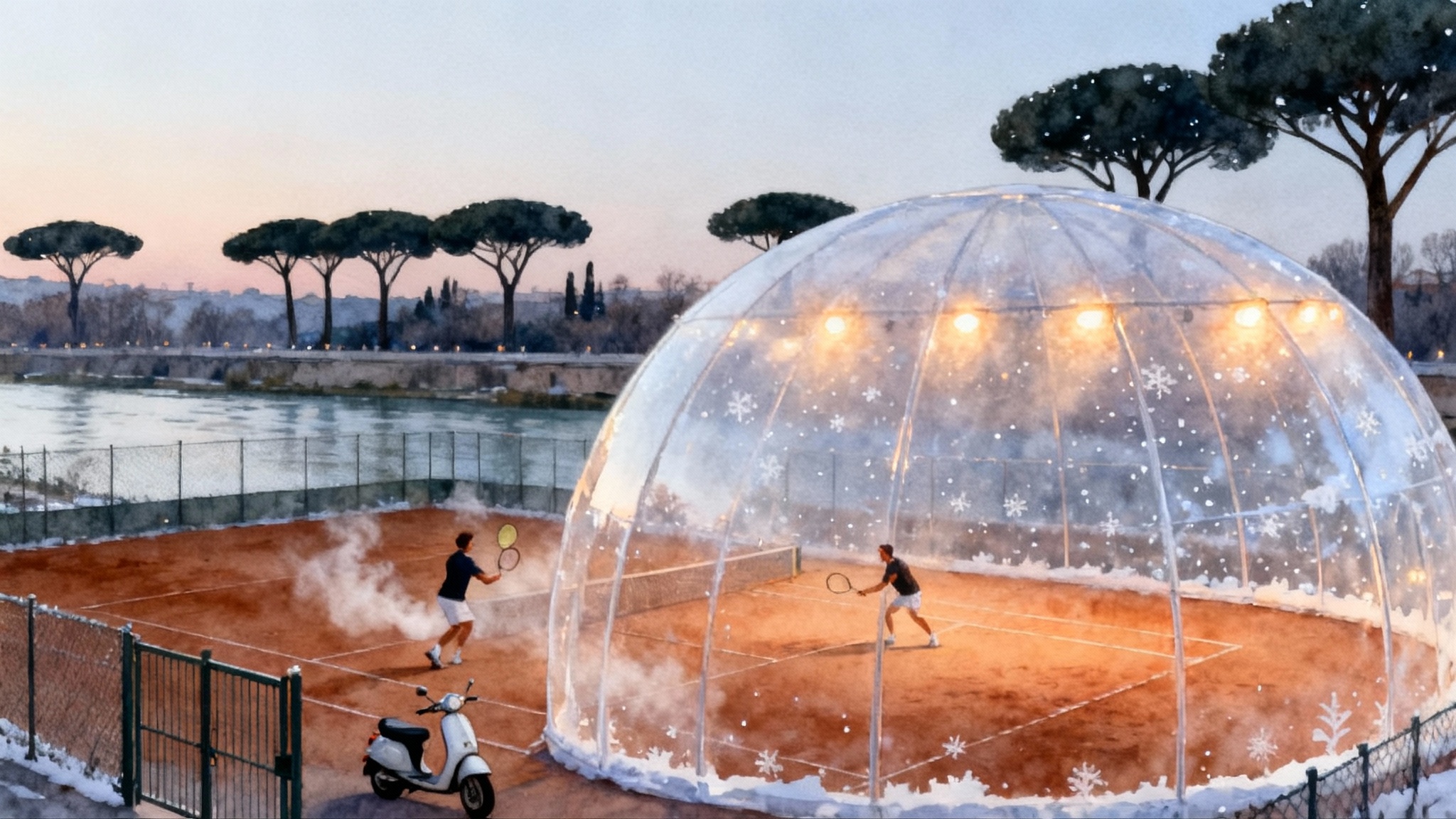
Why Rome is the smartest October to March tennis base
If you want real clay time without sacrificing flow or feedback, Rome offers one of Europe’s most balanced shoulder-season setups. Temperatures are mild, indoor bubbles are widespread, and the city’s clay inventory stays deep even in winter. Daylight is short in midwinter; Rome sits slightly north of Barcelona and south of Nice, and far north of the Algarve, which still keeps workable playing windows on cool days. Expect roughly 12 to 21 degrees Celsius most of October, 7 to 15 degrees Celsius in November, 4 to 12 degrees Celsius in January, and 8 to 16 degrees Celsius by March. Rome’s daylight bottoms out near 9 hours around the December solstice, then climbs quickly in February and March, a pattern you can preview on this chart of Rome daylight in winter.
Here is the quick climate and daylight comparison you can plan around from October to March:
- Rome: reliable mix of mild afternoons, frequent indoor bubbles, and many red clay clubs within city limits; daylight about 9 hours in late December, around 11 in February, and near 12 by late March.
- Barcelona: slightly breezier on the coast with similar winter highs; good clay supply but fewer centrally located indoor options. See our deeper look in the Barcelona coast clay training .
- Nice: cooler average highs than Rome with bright days, but indoor availability can be tighter near the center.
- Algarve: quick-drying outdoor play and mild temps, but fewer indoor fallbacks inside major towns. Compare with the Algarve winter tennis guide .
Bottom line: Rome gives you the best odds of consistent session quality across a full six-month shoulder-season window, with the scale of a capital city and world-class sightseeing when you rest.
Your training anchor: Rome Tennis Academy
For high-quality repetitions and feedback, make the Rome Tennis Academy your base. The academy runs small coach-to-player ratios, fast video review, and a clean mix of indoor and outdoor clay. Sessions are paced for development rather than just cardio, with specific goals for footwork patterns, contact height, and shot tolerance. Coaches use video and data to shorten the loop between feel and facts, often with PlaySight-style tools for tagging and instant replay, such as SmartCourt video replay. The practical result is that your training stays productive even if weather shifts or you carry a minor niggle that demands a lower-impact surface.
Read more or inquire via the Rome Tennis Academy profile.
What a typical session looks like
- Dynamic warm up, then two movement patterns focused on balance through the split step and first push.
- Clay baseline blocks with targets for height and margin, 8 to 12 ball tolerances, and one change of direction built into every rally.
- Serve plus one patterns, alternating deuce and ad starting positions, tracking first serve locations and plus one depth.
- Short video tag and review between blocks to confirm cues and adjust.
- Finisher: live points with constraints, for example, second serve to the backhand and at least one high, heavy ball before any change of direction.
Expect a calm, professional environment rather than a resort vibe. You will be asked to bring your own balls for some drills, be on court early, and log your session notes. That is a feature, not a bug.
Booking tips
- Reserve early for Saturday to Monday arrivals. Plan long blocks that mix indoor and clay to hedge against rain.
- Ask for small-ratio groups, two players to one coach, or private blocks with timed video review.
- If you are traveling with juniors, split days into a morning technical block and a shorter afternoon decision-training block so the legs stay fresh.
Neighborhoods and transit near the courts
Rome’s tennis belt wraps the north side of the city, where many clubs sit near river bends and green zones. Focus your lodging search on these areas for short commutes.
- Flaminio and Parioli: close to the Foro Italico and several clubs. Easy access to tram connections and bus corridors, quick rides north toward river-side courts.
- Tor di Quinto and Ponte Milvio: a sweet spot for clay clubs, jogging paths, and food. Expect short taxi or rideshare hops to training.
- Cassia and La Giustiniana: more residential, with clusters of clubs and covered courts. Good if you want quiet nights and easy car access.
- Prati: walkable, central-feeling, and still a reasonable jump to the northern clubs.
Transit
- Metro A and B reach much of the city. From central stops you can connect by tram or bus toward the sports district near the river. If you prefer simplicity, budget for short taxis to and from sessions.
- From Fiumicino Airport, the Leonardo Express reaches Termini Station in about 30 minutes. Ciampino is bus and shuttle oriented. Taxis from both airports have fixed city-center fares.
Climate and daylight, explained simply
- Temperature: winter highs usually ride in the low to mid teens Celsius, which keeps clay playable most afternoons. When rain hits, indoor bubbles keep the plan intact.
- Rain and drying: clay drains well in Rome’s sandy mixes. If a shower interrupts, courts often restart after a short window. Many venues cover at least part of their inventory.
- Daylight: December feels short at about 9 hours of light. By March, you are back near 12 hours, which expands match windows and sightseeing flexibility.
Compared with Barcelona and Nice, you get similar or slightly warmer afternoon highs in Rome, plus more indoor safety. Compared with the Algarve, you trade a bit of wind exposure for a denser network of courts and indoor fallbacks inside the city.
Three turnkey itineraries
Each plan assumes Rome Tennis Academy morning blocks with optional afternoon add ons. Swap days as needed. You can request custom setups through the Rome Tennis Academy profile.
3 days: reset and refocus
- Day 1, arrival and tune up: light jog, stretch, 90 minute hitting with emphasis on height and spin. Evening stroll through Piazza del Popolo and the Pincio terrace for a sunset view.
- Day 2, technical morning, culture afternoon: two hour session with serves and patterns. Post lunch, visit the Vatican Museums or Castel Sant’Angelo. Dinner in Prati or Ponte Milvio.
- Day 3, test day: point-based drills in the morning, then a friendly set at a nearby club. Lunch near Flaminio, departure.
What you build: confidence in rally tolerance on clay, a refreshed serve rhythm, and travel momentum without overloading your legs.
7 days: build a base and see the city
- Day 1, travel and easy movement. Check strings, grips, and shoes.
- Day 2, clay fundamentals: two hours with video tags on the forehand and backhand, tempo work in the last 30 minutes.
- Day 3, serve plus one and return: one hour serve, 30 minutes return, 30 minutes live points.
- Day 4, recovery and sightseeing: morning walk on the Tiber paths, light gym or pool, Colosseum and Roman Forum in the afternoon.
- Day 5, patterns day: north south depth control, then diagonal-to-straight change of direction. Evening set play.
- Day 6, match rehearsal: two short sets with constraints and a tiebreak. Video review and notes.
- Day 7, taper and gelato: one hour feel session, lunch near Villa Borghese, fly home.
What you build: repeatable footwork sequences, a stronger plus one, and match fitness that transfers to spring leagues.
14 days: a mini pre-season
- Week 1 focus, technique and habits: four academy mornings with targeted themes, one guided strength session, one mobility block, and two light hit days. Sightseeing focus on neighborhoods rather than long museum lines. Think Testaccio food tours, Trastevere walks, and MAXXI for modern art near Flaminio.
- Week 2 focus, patterns and match play: three academy mornings that end with 45 minutes of live points, one sparring session with a local player, one rest day with an easy city ride, and a weekend club event or ladder evening.
What you build: a two week block that stabilizes your shape on clay and closes the feedback loop with video and stats so you hit March with clarity.
Cost bands and how to budget
All ranges are typical as of 2025 and vary by coach, club, and season. Prices reflect Rome city rates for shoulder season.
-
Coaching and groups
- Private lesson, 60 minutes: 70 to 130 euros
- Small-group session, 90 to 120 minutes: 35 to 70 euros per player
- Video and analytics add on: 30 to 80 euros per session
- Court rental, 60 minutes indoor bubble: 18 to 35 euros; outdoor clay: 12 to 25 euros
-
Lodging per night
- Budget apartments or guesthouses near northern districts: 80 to 150 euros
- Midrange hotels in Parioli, Prati, or Flaminio: 150 to 300 euros
- Upper tier or boutique stays near Villa Borghese and riverfront: 300 to 600 euros
-
Transit and incidentals
- Airport train or shuttle to center: 14 to 20 euros
- Taxis within the northern zone: 10 to 25 euros per ride depending on time and distance
- Weekly public transit pass: plan 20 to 30 euros
- Stringing: 15 to 25 euros labor, plus the cost of string if needed
-
Sample weekly budgets per person
- Lean training week: 5 group sessions, 1 private, shared court time, budget lodging, transit passes and meals at midrange spots: 800 to 1,250 euros
- Balanced build week: 4 groups, 2 privates, 1 spar, midrange lodging, a few taxis, museum entries and nicer dinners: 1,400 to 2,200 euros
- Premium tune up week: daily privates, daily video, mixed indoor and clay rentals, boutique lodging, door to door taxis: 2,800 to 4,500 euros
Packing for clay and cool or wet days
- Shoes: dedicated clay shoes with full herringbone outsole. Bring a second pair for indoor bubbles in case clubs require dry soles.
- Strings: pack two reels or at least four sets. Cooler air plays firmer. If you use polyester, consider dropping tension 1 to 2 kilograms compared with summer. For gut or hybrid, keep your normal reference but recheck after the first session.
- Apparel: light thermal baselayer, long sleeve performance top, and a breathable shell. Add a beanie and light gloves for early mornings.
- Socks and towels: high friction socks, two towels, and a small chamois to dry grips between drills.
- Grips: bring at least one overgrip per day. In cool humidity, overgrips saturate quickly.
- Recovery: travel roller, small massage ball, and a compact hot-cold pack for post-session ankles or forearms.
- Bag extras: zip bags for dirty clay gear, a portable phone tripod for video from the back fence, and a universal outlet adapter.
Where to stay, by vibe
- Walk-to-courts convenience: Flaminio or Parioli. You will be near river paths, tram lines, and quick bus rides to northern clubs.
- Food and evening strolls: Ponte Milvio and Prati. Dense clusters of trattorias and cafes with short taxi hops to training.
- Quiet and green: Cassia and La Giustiniana. Farther into the suburbs, calmer at night, often with on-site parking.
Book places with a washer, radiator drying racks, and a space for shoes to air out. Clay plus light rain equals wet gear, so laundering logistics matter more than in summer.
Local match play, October to March
Rome’s club ecosystem hums year round. Pair your training block with one or two of these formats.
- Club ladders and team friendlies: many clubs run internal ladders that take guests with a small fee. Ask the academy staff to place you.
- Weekend singles and doubles events: look for local amateur circuits that host Saturday or Sunday draws. These are ideal at the end of a training week.
- Sanctioned tournaments: if you plan to join a federation event, you may need a medical certificate and specific registration steps. Build a ten day buffer around paperwork unless you already hold a valid card.
- Sparring sessions: the fastest way to test patterns. Ask for a local player who matches your level and preferred style.
Timing suggestions for 2025 to 2026
- October and November: play outdoors most days. Target one weekend event after a five day build.
- December and early January: plan indoor backups and keep sessions slightly shorter. Add evening ladder matches under cover.
- Late January and February: conditions stabilize. Book two match nights per week in addition to two to three academy mornings.
- March: daylight expands and surfaces dry faster, so you can add back to back play days.
Rome versus Barcelona, Nice, and the Algarve in practice
Use this checklist to choose your base.
- Do you need indoor certainty for a tight schedule? Rome wins on density of indoor bubbles near central neighborhoods.
- Do you want maximum clay with short transfers? Rome and Barcelona are close, but Rome’s northern arc of clubs reduces car time. For Barcelona specifics, see the Barcelona coast clay training.
- Are you after the warmest afternoons? Algarve edges Rome on temperature, but indoor backups are limited. If you can accept a short shower, Rome still gives you more guaranteed reps. Compare with the Algarve winter tennis guide.
- Do you plan to mix tennis and museums in one day? Rome is unmatched for short, low-friction cultural add ons between sessions.
Getting in from the United States
Rome hosts direct or seasonal direct flights from multiple United States hubs, including New York area airports and Boston, with additional seasonal options from major hubs. Fiumicino is the main international gateway, Ciampino serves low cost carriers. Book arrivals in the morning where possible so you can nap, hit lightly in the afternoon, and sync your body clock.
A simple weekly block you can copy
- Monday: two hour academy block focused on height and margin. Afternoon recovery walk.
- Tuesday: serve and return plus 45 minutes of live points.
- Wednesday: gym strength, mobility, and a one hour feel hit. Early night.
- Thursday: patterns day with video and notes. Evening ladder match.
- Friday: tactical sets, two short sets and a tiebreak.
- Saturday: sightseeing first, then an evening spar or doubles.
- Sunday: rest or a brunch hit, pack, and review your notebook.
Final take
Rome in the shoulder season is not just about dodging rain. It is about banking high quality, low friction reps that actually stick. Mild afternoons, indoor safety where you need it, and enough red clay to train like it is April even in January. Anchor your week at a serious academy, build a schedule that breathes, and let the city do the rest. When spring leagues start, you will feel like you already played the opening month.
